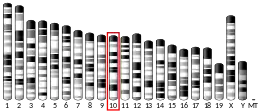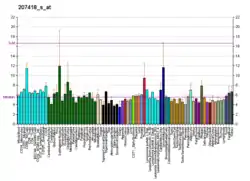| DDO | |||||||||||||||||||||||||||||||||||||||||||||||||||
|---|---|---|---|---|---|---|---|---|---|---|---|---|---|---|---|---|---|---|---|---|---|---|---|---|---|---|---|---|---|---|---|---|---|---|---|---|---|---|---|---|---|---|---|---|---|---|---|---|---|---|---|
| Identifiers | |||||||||||||||||||||||||||||||||||||||||||||||||||
| Aliases | DDO, Ddo, 5330420D20Rik, 5730402C02Rik, AI467244, DASOX, DDO-1, DDO-2, D-aspartate oxidase | ||||||||||||||||||||||||||||||||||||||||||||||||||
| External IDs | OMIM: 124450 MGI: 1925528 HomoloGene: 101531 GeneCards: DDO | ||||||||||||||||||||||||||||||||||||||||||||||||||
| |||||||||||||||||||||||||||||||||||||||||||||||||||
| |||||||||||||||||||||||||||||||||||||||||||||||||||
| |||||||||||||||||||||||||||||||||||||||||||||||||||
| |||||||||||||||||||||||||||||||||||||||||||||||||||
| |||||||||||||||||||||||||||||||||||||||||||||||||||
| Wikidata | |||||||||||||||||||||||||||||||||||||||||||||||||||
| |||||||||||||||||||||||||||||||||||||||||||||||||||
D-aspartate oxidase is an enzyme that is encoded by the DDO gene.[5][6]
The protein encoded by this gene is a peroxisomal flavoprotein that catalyzes the oxidative deamination of D-aspartate and N-methyl D-aspartate. Flavin adenine dinucleotide or 6-hydroxyflavin adenine dinucleotide can serve as the cofactor in this reaction. Two (or four, according to Q99489) transcript variants encoding different isoforms have been found for this gene.[6]
References
- 1 2 3 GRCh38: Ensembl release 89: ENSG00000203797 - Ensembl, May 2017
- 1 2 3 GRCm38: Ensembl release 89: ENSMUSG00000063428 - Ensembl, May 2017
- ↑ "Human PubMed Reference:". National Center for Biotechnology Information, U.S. National Library of Medicine.
- ↑ "Mouse PubMed Reference:". National Center for Biotechnology Information, U.S. National Library of Medicine.
- ↑ Setoyama C, Miura R (Jul 1997). "Structural and functional characterization of the human brain D-aspartate oxidase". J Biochem. 121 (4): 798–803. doi:10.1093/oxfordjournals.jbchem.a021655. PMID 9163533.
- 1 2 "Entrez Gene: DDO D-aspartate oxidase".
Further reading
- Barker RF, Hopkinson DA (1977). "The genetic and biochemical properties of the D-amino acid oxidases in human tissues". Ann. Hum. Genet. 41 (1): 27–42. doi:10.1111/j.1469-1809.1977.tb01959.x. PMID 21608. S2CID 40488767.
- Van Veldhoven PP, Brees C, Mannaerts GP (1991). "D-aspartate oxidase, a peroxisomal enzyme in liver of rat and man". Biochim. Biophys. Acta. 1073 (1): 203–8. doi:10.1016/0304-4165(91)90203-S. PMID 1991137.
- Nagasaki H (1994). "Gender-related differences of mouse liver D-aspartate oxidase in the activity and response to administration of D-aspartate and peroxisome proliferators". Int. J. Biochem. 26 (3): 415–23. doi:10.1016/0020-711X(94)90062-0. PMID 8187937.
- Simonic T, Duga S, Negri A, et al. (1997). "cDNA cloning and expression of the flavoprotein D-aspartate oxidase from bovine kidney cortex". Biochem. J. 322 (3): 729–35. doi:10.1042/bj3220729. PMC 1218248. PMID 9148742.
- Amery L, Brees C, Baes M, et al. (1999). "C-terminal tripeptide Ser-Asn-Leu (SNL) of human D-aspartate oxidase is a functional peroxisome-targeting signal". Biochem. J. 336 (2): 367–71. doi:10.1042/bj3360367. PMC 1219880. PMID 9820813.
- Zaar K, Köst HP, Schad A, et al. (2002). "Cellular and subcellular distribution of D-aspartate oxidase in human and rat brain". J. Comp. Neurol. 450 (3): 272–82. doi:10.1002/cne.10320. PMID 12209855. S2CID 24459809.
- Strausberg RL, Feingold EA, Grouse LH, et al. (2003). "Generation and initial analysis of more than 15,000 full-length human and mouse cDNA sequences". Proc. Natl. Acad. Sci. U.S.A. 99 (26): 16899–903. Bibcode:2002PNAS...9916899M. doi:10.1073/pnas.242603899. PMC 139241. PMID 12477932.
- Mungall AJ, Palmer SA, Sims SK, et al. (2003). "The DNA sequence and analysis of human chromosome 6". Nature. 425 (6960): 805–11. Bibcode:2003Natur.425..805M. doi:10.1038/nature02055. PMID 14574404.
- Gerhard DS, Wagner L, Feingold EA, et al. (2004). "The status, quality, and expansion of the NIH full-length cDNA project: the Mammalian Gene Collection (MGC)". Genome Res. 14 (10B): 2121–7. doi:10.1101/gr.2596504. PMC 528928. PMID 15489334.
This article is issued from Wikipedia. The text is licensed under Creative Commons - Attribution - Sharealike. Additional terms may apply for the media files.





